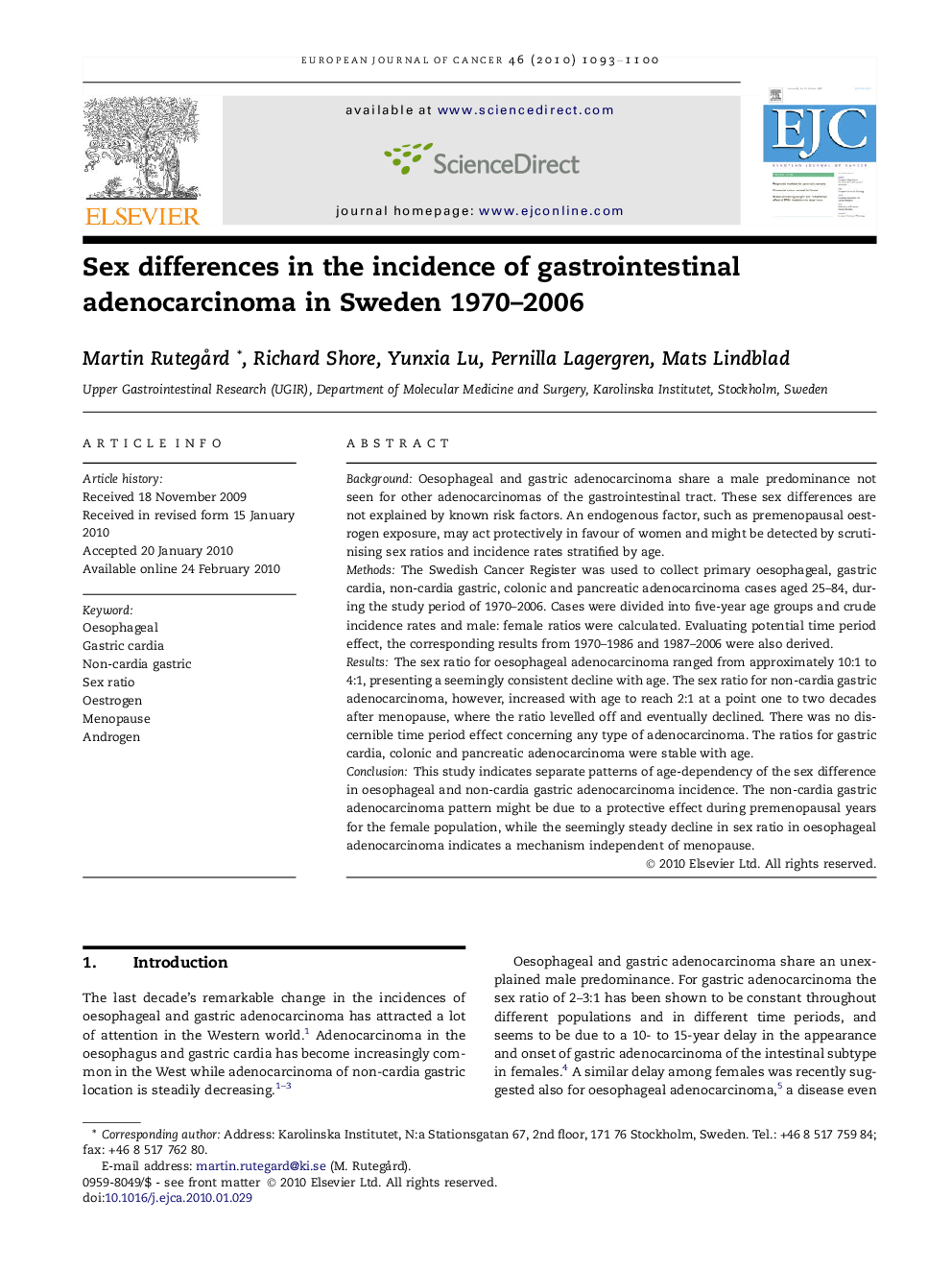| کد مقاله | کد نشریه | سال انتشار | مقاله انگلیسی | نسخه تمام متن |
|---|---|---|---|---|
| 2123349 | 1547214 | 2010 | 8 صفحه PDF | دانلود رایگان |

BackgroundOesophageal and gastric adenocarcinoma share a male predominance not seen for other adenocarcinomas of the gastrointestinal tract. These sex differences are not explained by known risk factors. An endogenous factor, such as premenopausal oestrogen exposure, may act protectively in favour of women and might be detected by scrutinising sex ratios and incidence rates stratified by age.MethodsThe Swedish Cancer Register was used to collect primary oesophageal, gastric cardia, non-cardia gastric, colonic and pancreatic adenocarcinoma cases aged 25–84, during the study period of 1970–2006. Cases were divided into five-year age groups and crude incidence rates and male: female ratios were calculated. Evaluating potential time period effect, the corresponding results from 1970–1986 and 1987–2006 were also derived.ResultsThe sex ratio for oesophageal adenocarcinoma ranged from approximately 10:1 to 4:1, presenting a seemingly consistent decline with age. The sex ratio for non-cardia gastric adenocarcinoma, however, increased with age to reach 2:1 at a point one to two decades after menopause, where the ratio levelled off and eventually declined. There was no discernible time period effect concerning any type of adenocarcinoma. The ratios for gastric cardia, colonic and pancreatic adenocarcinoma were stable with age.ConclusionThis study indicates separate patterns of age-dependency of the sex difference in oesophageal and non-cardia gastric adenocarcinoma incidence. The non-cardia gastric adenocarcinoma pattern might be due to a protective effect during premenopausal years for the female population, while the seemingly steady decline in sex ratio in oesophageal adenocarcinoma indicates a mechanism independent of menopause.
Journal: European Journal of Cancer - Volume 46, Issue 6, April 2010, Pages 1093–1100